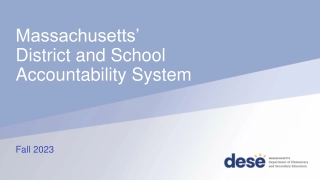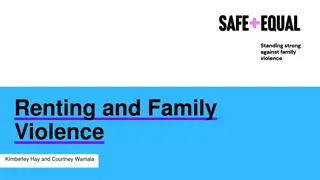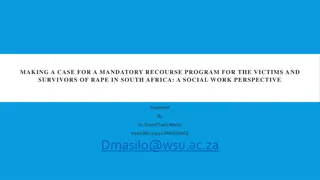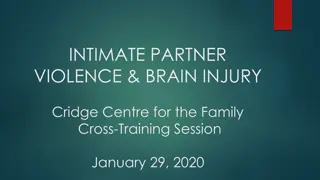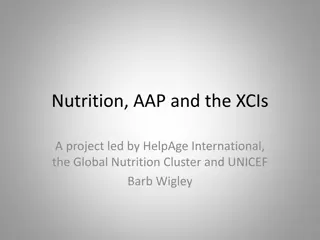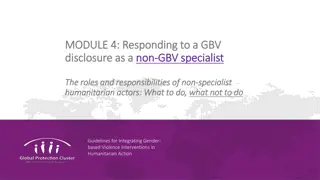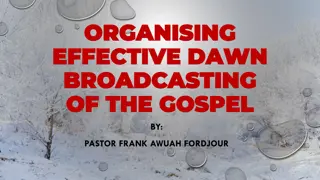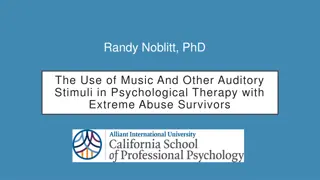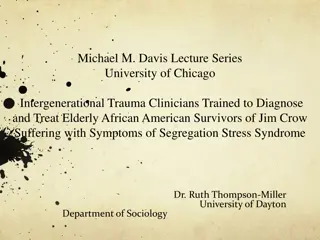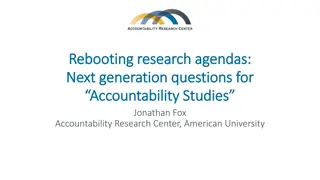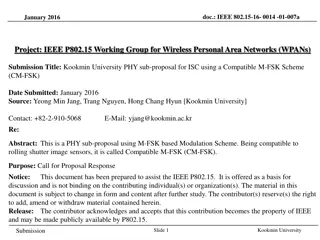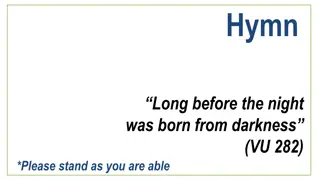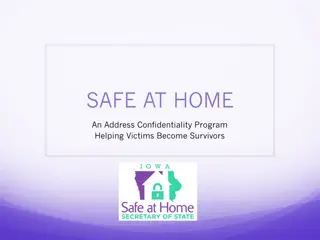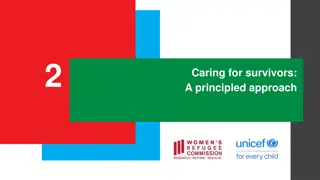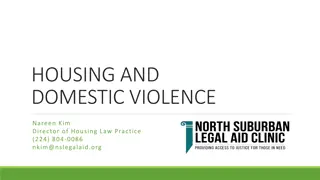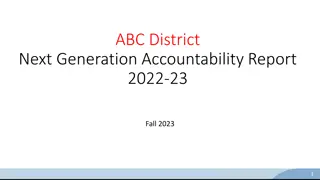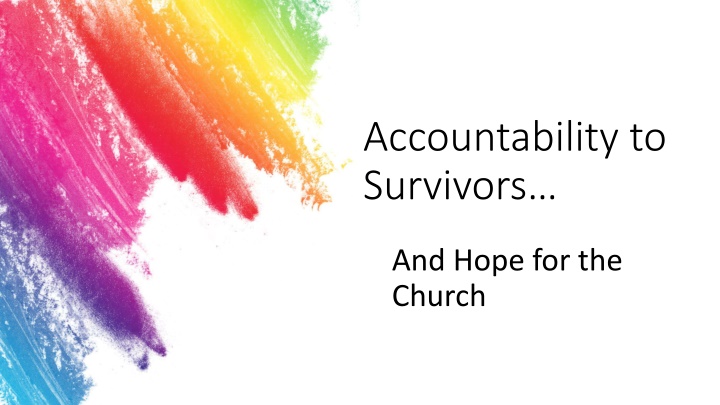
Transformative Healing and Accountability in Church Context
Explore the importance of accountability to survivors and the church, focusing on transformative healing, making amends, and creating safe reporting processes. Learn how survivors' experiences of reporting can be improved through clear communication and prioritizing individuals over organizations. Discover the significance of transparency, adaptable processes, and the emotional toll on survivors in this crucial work.
Download Presentation

Please find below an Image/Link to download the presentation.
The content on the website is provided AS IS for your information and personal use only. It may not be sold, licensed, or shared on other websites without obtaining consent from the author. If you encounter any issues during the download, it is possible that the publisher has removed the file from their server.
You are allowed to download the files provided on this website for personal or commercial use, subject to the condition that they are used lawfully. All files are the property of their respective owners.
The content on the website is provided AS IS for your information and personal use only. It may not be sold, licensed, or shared on other websites without obtaining consent from the author.
E N D
Presentation Transcript
Accountability to Survivors And Hope for the Church
What do I mean by Accountability The real, transformative healing of harm for everyone involved (survivor, perpetrator, bystanders, their kinship networks, and our communities). Apologising. Making amends. Changing your behaviour so that it doesn t happen again. Being responsible for your choices and the consequences of your choices. Doing all the hard work with your feelings. Making a plan so that you don t make that same choice moving forward.
Specific Church Context To make reporting easy.
Survivors Experience of Reporting Experience They found that there was no easy access information about how to contact someone in the organisation. Complicated information. Response Prominent, clearly displayed contact details. Clear, powerful, safeguarding statement. Use of technology: Self- Referral Apps / Anonymous Reporting.
Specific Church Context To meet the person and make them the priority, not the organisation.
Meeting the person Experience Response Facilitated Listening Meetings. Counsellors involved / Trauma informed. Agreed Agenda. Connectedness: Be seen Be heard & permission to speak Valued Respected Be informed. Be available. Boundaries. Action Plan. Refusal to meet. Denial or Qualified Denials. Time-limited. Accompanied (to protect the organisation). Inappropriate Venues. INVISIBLE.
Specific Church Context Transparency about and throughout the process, and processes that adapt to survivors needs.
Process Experience Response Administrative focused. Obfuscation. Overly Complicated. Delays / Lack of urgency. Legalistic. Combative. More care for the accused. Disconnected. Secure organisational commitment: Safeguarding structures. Personnel. Financial arrangements. Transparent complaints process. Organisational failures lessons learned. Closing the loop . Professionals engaged with organisational structures. Survivors engaged with the organisational structures. A more joined up service.
Recognition of the emotional cost that taking part in this work often has for survivors Requires a commitment to the ongoing safeguarding of the group s welfare A running tension about how close is too close to the institution responsible for so much re-abuse An Independent Expert Advisory Panel / Lived Experience Panel: Underpins the perceived need for facilitators to be independent of the Church Members of the group will expect the right to privacy and anonymity Additional capacity Most members of coordinating group are not career survivors, but have day jobs, family and other commitments etc.
The Non-Negotiables Inclusive Independent Empowered Supported Professional (systemic, cyclical and planned) Resourced Strategic
Specific Church Context Proper follow- up by the organisation.
Effective Follow Up Response Putting Prevention First: Move away from risk management that only focuses on legal, financial and reputational risk to consideration of the health and wellbeing of people, communities and organisations. Creating A Culture of Safeguarding Discernment. Training. People not Policies & Procedures. Ethical Leadership. Assurance of non-recurrence. Support Plans: Communication. Agreements & Commitments. Personal Apologies & Explanations. A pastoral response. Redress. Experience Changes in personnel (Bishops / Provincials / Religious Leaders). Reluctance to acknowledge responsibility. Changes in Commitment. Non-Apology Apologies. Challenge to Civil Claims. A rush to fix and move on the problem.
When we are faced with exploring suffering and pain caused by sexual violence trauma, we are sometimes not able to take it all in. It s a natural protective barrier. Sometimes it s inconvenient, we need to focus on something, and we don t want to be pulled away from our focus. Our capacity to be with the suffering diminishes, that is only natural. Acknowledgement At times we might feel helpless in the face of suffering, and we need to shut down as not to get overwhelmed ourselves.
How can we respond? How can we find some ground in our work, which allows us to be present to the suffering, right here today in this room? How can we stay open to this conference, without needing to avoid by shutting off, daydream, leaving or falling asleep? How can we develop an empathic contact with the people in the congregation who have suffered or are suffering sexual violence? How can I address my own helplessness? How can I move from overwhelm to compassion?
What stage is your organisation currently at with embedding meaningful, strategic survivor engagement into your daily safeguarding practices? 1. Actively engaging 2. In development 3. Early thinking

